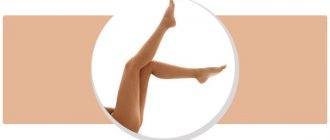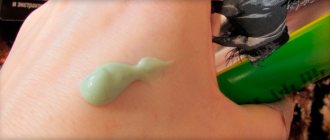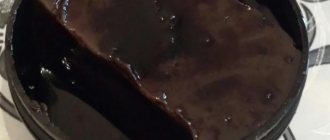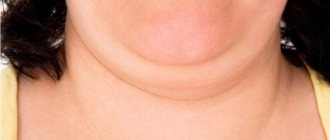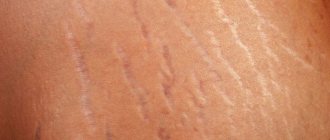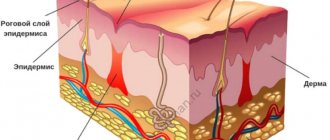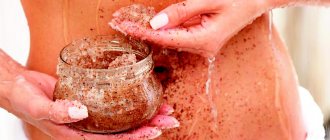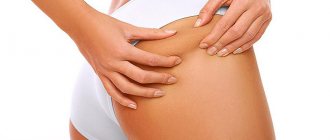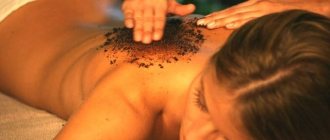( 2 ratings, average: 5.00 out of 5)
Recently, many drugs and clinical procedures for the removal of stretch marks have appeared on the market, including both affordable and very expensive. Before considering various remedies for stretch marks, let’s first try to figure out what stretch marks are and why they appear on the body?
How do stretch marks occur and why?
The appearance of stretch marks, which are essentially “dimples” in the skin, indicates that the collagen and elastin fibers that act as a framework in the skin are deeply damaged. Moreover, the skin cells that are involved in the production of these fibers are destroyed and cannot ensure their renewal. This can occur due to rapid growth, when the skin does not have time to produce enough cells and therefore stretches. For example, when you gain weight or become pregnant.
During pregnancy, significant hormonal changes occur and cortisol levels in the blood increase. Therefore, the risk of stretch marks increases.
To eliminate stretch marks, you need to restore the number of skin cells that serve as a framework for the skin. And, if necessary, normalize hormonal levels.
Cream for stretch marks - reviews, clinical studies
Let’s say right away that the results of independent clinical studies and studies conducted by manufacturers of anti-stretch marks differ by an average of 95%. This happens because manufacturers are interested in the result, and therefore take a small number of pregnant women for research, specifically selecting those who have a lower risk of developing stretch marks in principle (remember that stretch marks do not form at all, according to various sources, in 10-20% of women) .
Results of an independent study –
The study was conducted on 461 pregnant women. Research methodology: all patients were divided into three control groups. The first group used special preparations for stretch marks with active ingredients. The second group used a placebo (drugs without active ingredients). The third group did not receive any treatment at all and was needed only to compare the results with the first two groups.
A comparison of the results of the three groups showed that when using creams to prevent stretch marks, and in the absence of any preventive treatment at all, there was no statistically significant difference in the results. Those. The risk of developing stretch marks was reduced only minimally when using special creams and oils. The original study is located at the link.
Conclusions : in other words, at the moment there is not a single objective evidence of the effectiveness of any cream for the prevention of stretch marks. We cannot trust the research conducted by product manufacturers due to the low quality of such research (24stoma.ru).
Therefore, you should not place too much hope on the best cream for stretch marks during pregnancy, although its use may calm you down (which is already good). The most important thing for preventing stretch marks is to follow the recommendations for nutrition, hydration and skin restoration, which we wrote about at the end of the article.
Causes of stretch marks
Stretch marks can occur both during physiological conditions and be signs of various disorders and diseases. Let's take a closer look at the causes of stretch marks:
- pregnancy, menopause;
- in adolescence in children during growth spurts;
- sudden weight fluctuations;
- genetic predisposition;
- poor nutrition;
- taking hormonal medications (for example, corticosteroids);
- in athletes with intensive muscle building;
- endocrine and hereditary diseases (for example, hypercortisolism, hypothyroidism, congenital adrenal hyperplasia, Itsenko-Cushing's disease, etc.).
Studying the packaging: essential components of the cream
Let's figure out what ingredients make a good anti-stretch mark cream work.
Natural oils
Coconut and avocado oils, wheat germ, olive and grape seed oils are the most common components of stretch mark cream. They nourish well, retain moisture inside, and have a positive effect on the skin’s ability to regenerate. You can use them in their pure form. The only inconvenience is the greasy marks they leave on clothes.
Elastin and collagen
They help the skin stretch and prevent ruptures of connective tissue, which is what causes stretch marks to form in pregnant women.
Hyaluronic acid
Produced in the body to regulate water balance, maintains the firmness and elasticity of tissues.
Vitamins
Activate metabolic processes and the growth of new cells, thicken the epidermis. The most important of them is vitamin E. It is effective against redness and peeling.
Prevention of stretch marks
The most effective way to combat skin stretching is daily prevention. It is necessary to monitor your weight, trying to avoid sudden changes, and during the pre- and postpartum period, use special bandages that will help your muscles and skin cope with the additional load. During breastfeeding, be sure to wear a bra.
To reduce the likelihood of stretch marks appearing, we take care of it using a variety of creams that contain elastin and collagen; products containing vitamins A, E and C, as well as beneficial plant extracts and essential oils. All this helps to increase skin elasticity and strengthen it.
Sport, another method of prevention, tones not only the muscles, but also the skin - it improves blood circulation and metabolic processes in cells, promotes their division and renewal. To prevent stretch marks, it is recommended to go swimming, do morning exercises, and in general, any sport both at home and in the gym.
Collagen therapy in the fight against stretch marks
Recognize the enemy by sight
Stretch marks on the body or, in scientific terms, striae (from the Latin striae - stripes) are skin defects formed as a result of its stretching, in the form of stripes (shallow scars) of different widths, which can be colored from white to red-violet.
As a rule, there is a genetic predisposition to stretch marks. They appear during pregnancy, during puberty, and also with a sharp change in body weight, as a result of microtraumas of the skin and subcutaneous tissue. Exposure to hormones (corticosteroids, progesterone) and overstretching leads to loss of skin elasticity. Its upper layers become thinner and, as a result, under load, internal micro-tears of collagen and elastin fibers occur, which are then, during healing, replaced by connective (scar) tissue. This tissue contains blood vessels. They give red or blue-violet shades to stretch marks. The vessels gradually become empty, and the stretch marks turn white. However, since there is no pigment in the connective tissue, when tanning, the stretch marks remain white and are more noticeable against the background of tanned skin.
Most often, stretch marks appear on the chest, abdomen, thighs and buttocks - in places of chronic stretching of the skin as a consequence of hormonal changes in the body in the form of atrophic scars. Some endocrine diseases cause stretch marks to form on the face. In athletes who quickly build muscle mass, they may also appear on the inside of the arms and shoulders. Sometimes stretch marks occur as a result of the use of hormonal drugs, glucocorticoids (prednisolone, hydrocortisone, etc.), both internally and locally.
Steel arms
You can prevent the appearance of stretch marks by using various cosmetics: lotions, creams, oils, which are offered in sufficient quantities by various manufacturers of cosmetics, especially for children and for expectant mothers. They contain skin-strengthening essential oils, plant extracts and other active ingredients. At home, you can use olive oil to prevent the appearance of stretch marks by applying it to places where the notorious stretch marks are likely to appear. With active sports and, accordingly, intensive muscle building, you can also prevent the appearance of stretch marks with the help of special diets.
But if it was not possible to avoid the formation of stretch marks on the skin, modern cosmetology offers various ways to treat and remove them. The simplest and most accessible home remedies include all kinds of mud and algae wraps, cosmetic masks, contrast douches, compresses, and massage.
However, we rightly note that these procedures improve the condition of the skin to a small extent. If you have numerous and fairly deep stretch marks, for example on your stomach, even after repeated use of these products, you will hardly be able to afford to wear an open swimsuit.
Quite widely in the treatment of stretch marks, cosmetologists use mesotherapy, laser resurfacing, and chemical peeling. It is also recommended to polish the skin with peelings at home. A combination of all these methods is practiced. Treatment is usually long-term and not always effective. By the way, resurfacing, one of the most common ways to combat stretch marks, leads to the removal of the upper layers of the skin and achieves some external smoothing of the skin surface. But, unfortunately, this does not completely solve the problem, since the normal tissue structure is not restored.
Stretch marks can also be removed through surgery. During the operation, the area of skin on which the stretch marks are located is removed. This is a very expensive procedure, with possible complications and a recovery period of 10-14 days. All this together limits the number of patients resorting to this technique.
Collagen therapy
In recent years, a new method of treating stretch marks has emerged, which has allowed us to take a fresh look at this difficult problem and significantly improve treatment results. One of these methods, which has received numerous approving reviews from cosmetologists, is collostotherapy. The method is based on the intradermal injection of bioplastic material – a collagen gel complex. According to experts who have studied the drug in practice, Collost™ can be considered an alternative to plastic surgery.
This gel is a matrix for targeted tissue regeneration, which allows it to be used not only as an injectable microimplant, but also to activate the synthesis of one’s own collagen. In other words, what is important is that the drug not only restores collagen lost by the skin at the site of stretch marks, but promotes the active production of the body’s own collagen. As, in fact, is the affordable price of the drug relative to Western analogues.
After injection of the gel, the stretch marks are mechanically filled and the skin surface is leveled. At the site of injection of the gel, their own collagen fibers begin to form, as a result of which full-fledged tissue is formed at the site of the stretch marks, and the stretch marks become invisible, similar to the surrounding healthy skin.
Collostotherapy is effective at any age of the patient, for the treatment of both recently occurring and old stretch marks. For the safety of the patient, the doctor performs an allergy test 14 days before the procedure to exclude allergic reactions. Collostotherapy is painless, since a local anesthetic drug is first applied to the skin. Duration is only 20-30 minutes. The procedure is proposed to be repeated in about a month. Typically, four to eight treatments are required to achieve maximum results. Collostotherapy is successfully combined with other techniques, such as peelings and laser technologies.
Materials prepared by Maria Rutman
When to treat stretch marks?
Treatment of young stretch marks (up to a year) is much easier. Therefore, it is necessary to contact a doctor as soon as a problem appears. But there are certain periods of life when treatment is prohibited. For example, during pregnancy and lactation. Since during these periods it is impossible to carry out cosmetic procedures. To make the treatment of stretch marks easier and faster after the end of lactation, it is necessary to moisturize and nourish the skin with various means.
Striae that have already appeared will not disappear on their own. But it is necessary to carry out prevention in order to avoid them in the future. The likelihood of stretch marks should be considered individually for each individual. But, if stretch marks have already existed once, then in the presence of factors influencing their occurrence, the likelihood of stretch marks forming is very high.
Basic principles of care
- Already in the second trimester of pregnancy, when the chest and abdomen begin to actively become heavier, daily care to prevent stretch marks should become your habit. Regularity and consistency will help you keep your skin beautiful, smooth and tight.
- Under the influence of hormonal changes, many pregnant women become especially sensitive to familiar substances and products. Some people experience allergic reactions. Therefore, any cream for stretch marks must first be tested - applied to a small area and observed for the reaction.
- If the skin on your stomach or décolleté begins to itch, stop scratching it: mechanical stress aggravates the condition of the epidermis and promotes the formation of stretch marks. Pay special attention to this area when caring, apply moisturizer more often.
How to remove stretch marks?
Stretch marks are quite difficult to remove, as they are permanent changes to the skin. However, do not despair; modern cosmetology and medicine have learned to successfully cope with this problem.
Newly formed stretch marks:
If the period that has passed since the appearance of stretch marks is relatively short, then seaweed wraps can help in eliminating them. This procedure improves skin tone, and this in turn contributes to better healing of torn areas. Another effective procedure to reduce stretch marks is ozone therapy. It consists of subcutaneous injections of an oxygen-ozone mixture into problem areas. Such procedures give a lifting effect and improve metabolism in the epithelium. The procedure is done once a week, and the number of procedures varies from 8 to 20.
Old stretch marks:
Today there are medical technologies that can also get rid of old stretch marks. A comprehensive treatment program allows you to remove traces of stretch marks and restore collagen production in the skin, regardless of age. Of course, it is easier to remove stretch marks that are fresh up to 1 year old, but an experienced doctor, having chosen the right treatment, can remove stretch marks that are even more than 20-30 years old.
Laser resurfacing. In this procedure, a laser removes the top layer of skin (epidermis) where the stretch marks are located. Thus, this procedure “smoothes” the surface of the skin. In addition, the laser starts the process of skin cell renewal and the formation of new collagen. For fresh stretch marks up to 1 year, 1 laser resurfacing procedure is sufficient. The doctor may prescribe 2-3 resurfacing procedures to remove old stretch marks.
Laser rejuvenation Derma Genesis. This is another laser procedure. It does not require recovery, is pleasant for the patient, but requires more procedures to achieve results. The laser warms up the fibroblast skin cells, which are responsible for the production of collagen and elastin, and thus restore the lost framework.
Eximia . If, in addition to stretch marks, the goal is to eliminate sagging skin and lose weight, the Eximia procedure is suitable, which is aimed at lifting the skin. A special nozzle makes it fit due to the influence of RF. After a course of Eximia, the skin becomes smooth and sagging goes away. And the massage effect allows you to achieve weight loss. Metabolic processes are activated and new collagen is produced. For a good effect, you need to complete a course of 6-10 procedures once a year.
Plasma therapy Endoret . And this is an injection procedure - the introduction into the skin of the patient’s own blood plasma, enriched with growth factors, through small injections. These factors promote rejuvenation and cell division. It is prescribed to restore metabolism, i.e. stimulates the production of protein by skin cells and the growth of collagen in the skin. It is important to combine this procedure with hardware techniques; it enhances their effect. The number of procedures that will be needed depends on the complexity of the task - the number, depth and age of stretch marks. This can be 1-4 procedures.
Chemical peeling . During chemical peeling, acids are applied to the skin, which burn the deep layers of the epidermis, and at the same time, this procedure significantly stimulates collagen synthesis. Chemical peeling is a rather serious and painful intervention, so it is performed under anesthesia, and upon completion it is necessary to undergo a course of rehabilitation treatment.
Mesotherapy . Sometimes, to treat stretch marks, a mesotherapy procedure is prescribed, which consists of introducing microinjections of a cocktail consisting of nutrients, vitamins and extracts under the skin. This procedure helps accelerate metabolic processes in connective tissues in the areas of stretch marks. All this contributes to the complete or partial resorption of stretch marks. The course consists of 7-10 procedures.
Abdominoplasty .
Complete removal of stretch marks is guaranteed only by abdominoplasty surgery, during which a small area of abdominal skin containing stretch marks is radically excised.
Causes of stretch marks
This kind of trouble can happen at any age: both in teenagers and in older people. More often, women ask to get rid of stretch marks, however, this does not mean that men are less susceptible to stretch marks.
What causes striae:
- Hormonal imbalance . It affects teenagers, pregnant women and women with menopause. Prevention would be a trip to an endocrinologist. He will prescribe a blood test, look at the results and select the necessary drug. In this case, by adjusting the level of hormones in the body, the skin defect may disappear on its own.
The abundance of stretch marks on the body is a reason to think about your health.
- Sudden weight gain . Pregnant women and obese people suffer from this: body volume increases so quickly that the cells simply do not have time to regenerate in the required quantity. This increases skin tension and thins the epidermis. If you move it carelessly, it easily breaks and stretch marks appear.
Rapid weight gain is one of the causes of stretch marks
- Sedentary lifestyle . Muscles weaken, blood flow does not work as quickly as during normal physical activity. As a result, less oxygen, vitamins and other useful substances reach the cells, the epidermis becomes thinner and, ultimately, breaks.
To prevent stretch marks, physical activity is necessary.
- Incorrectly selected sports exercises or their excessive implementation. Excessive exercise can be just as harmful as a sedentary lifestyle. The only difference is that with fanatical sports, the muscles do not have time to rest, the body is in constant tension. This weakens the cells and the muscles increase in volume - tension increases and the elasticity of the skin decreases.
Sports can both help and harm: improper exercises thin the epidermis
You can reduce the risk of stretch marks by leading a healthy lifestyle: eating right, sleeping 8 hours a day, going for walks and doing light exercise such as yoga, swimming or dancing.
If a stretch mark already exists, you can get rid of it with the help of cosmetology or a special cream - it all depends on the complexity of the defect.
How to treat stretch marks at home?
The treatment of stretch marks needs to be approached comprehensively, even at home. In addition to proper nutrition and physical activity, it is necessary to add cosmetic
care. Let's look at the basic home care methods for stretch marks that are considered effective.
- Clean the skin with a scrub 1-2 times a week. In addition to the scrub itself, you must use a hard washcloth or exfoliating glove. You need to scrub your stomach clockwise, your hips with movements from the knee up, and your buttocks with movements horizontally.
- Contrast shower in the morning. You need to start with a comfortable water temperature, then change fairly hot water and cold water every 30 seconds. The water change must be repeated 3 to 5 times. The contrast shower is usually completed with cold water.
- Daily use of creams and gels for stretch marks.
- Use of essential oils. Jojoba and wheat germ oils are best used as base oils. To 2 tablespoons of base oil you need to add 4-5 drops of mint, rosemary, lavender oil. You can combine it to your taste. The mixture of oils must be rubbed into the skin 2 times a day. You can also take baths with essential oils 2-3 times a week for 20 minutes. The following composition of essential oils for baths is recommended: 5 drops orange, 2 drops geranium, 6 drops neroli, 3 drops frankincense, 2 drops nutmeg.
- Algae baths. Pour hot water over the dried kelp and leave for at least 30 minutes. Next, the resulting infusion is added to the bath.
- Wraps consist of applying the active composition to the skin and then wrapping it in plastic film. When wrapping, kelp, clay, Dead Sea mud and other cosmetic mixtures for wraps are used.
- Massage - daily when applying creams, gels and other products. You can also do vacuum massage with home massagers.
Are stretch mark creams effective?
It is impossible to get rid of stretch marks at home. In fact, creams, oils, masks, wraps are effective only for the prevention and prevention of stretch marks. But if there are already stretch marks on the body, then no creams will help remove these skin breaks. Since all cosmetics, without the use of special cosmetic techniques, penetrate only into the surface layer of the skin - the epidermis, and it is necessary to restore damaged elastin and collagen fibers in a deeper layer - the dermis.
Treatment of stretch marks is a long and complex process. To achieve an effect, it is necessary to carry out complex therapy with medical procedures. In each individual case, the cosmetologist draws up an individual treatment program.
What are stretch marks?
Dermatologist-cosmetologist Elena Sibrina, chief physician of the Vitaura clinic : “Stretch marks or stretch marks are, in fact, a rupture of the skin to its entire depth.”
Dermatologist-cosmetologist Marina Miusova, Lazerjazz clinic: “There are two forms of stretch marks: red (initial inflammatory phase) and white (atrophic scars - the final phase, when a defect is formed in all layers of the skin due to pathological collagen).”
Dermatologist-cosmetologist Tatyana Al Sabunchi, chief physician of the Tori clinic: “At first, stretch marks are red because they are filled with blood vessels. While stretch marks are forming, this is not scar tissue yet, but fiber disintegration, thinning of the skin. It becomes looser in this place. Then the vessels become empty, collagen production increases, a scar forms - and the stretch marks turn white and become less noticeable.”
Model with stretch marks in the Boohoo store catalog
